FUCHS in Space
Today, government agencies and private companies within and outside of the aerospace sector are rushing to explore the great unknown with both large and small satellites and spacecraft. With more players, more missions, and large constellations of satellites, the need for innovative space lubricants will continue to grow.
Through the strategic acquisition of Nye Lubricants in 2020 the Fuchs group has developed capacity, and segment experience to supply high-performance lubricants and specialty products in support of Space on-ground and in-orbit operations. The Nye lubricants team has worked with leading space organizations for more than 65 years to develop cutting-edge formulations.
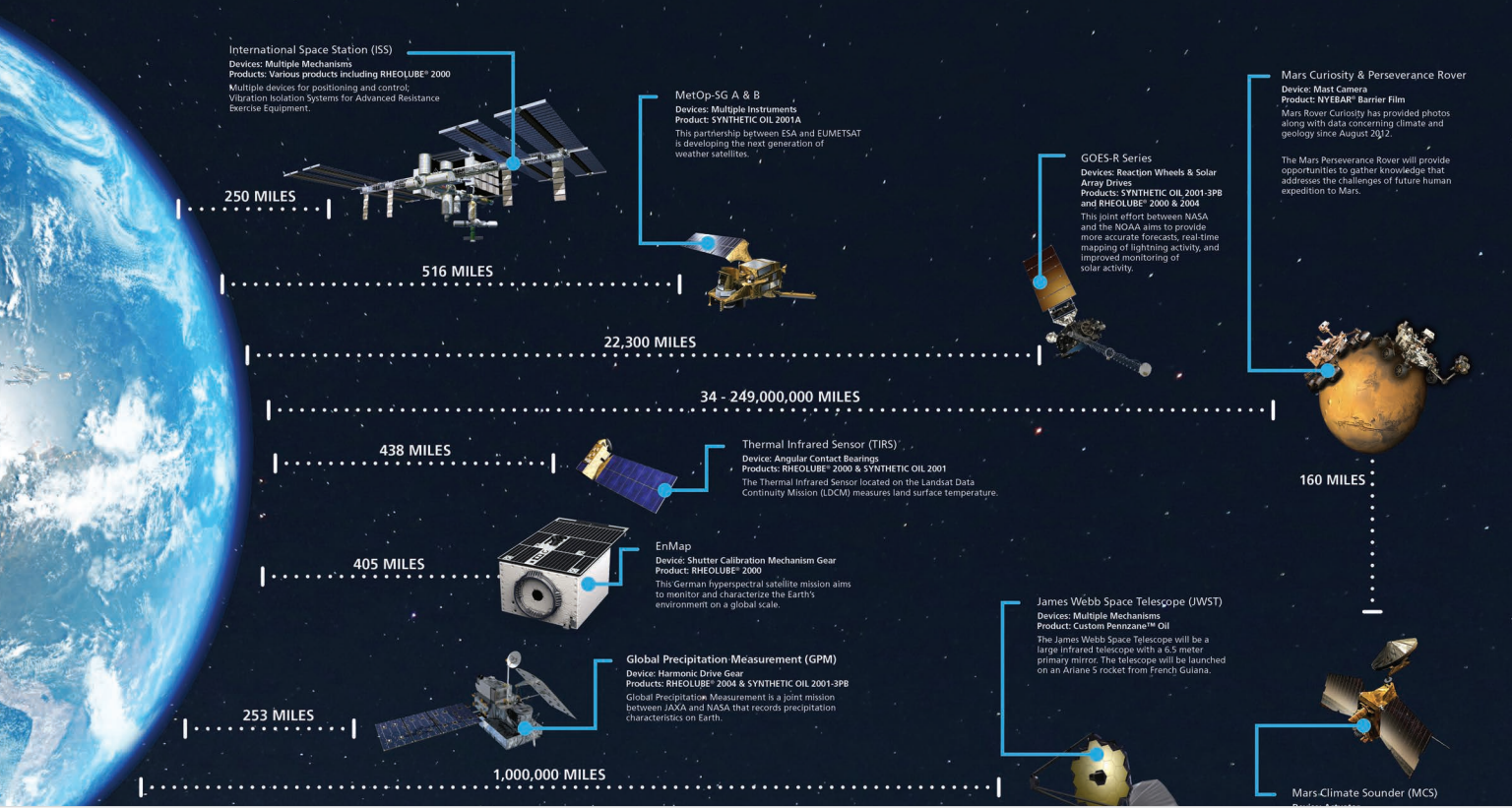
In the February of 2021, the Mars Perseverance Rover landed on Mars and with it, a barrier film from Nye Lubricants. Nye’s space lubricants have a long flight history and were first launched into space on the Mercury Mission in 1963. Nye products have played a critical role in protecting components on the International Space Station, GOES-R Series Satellites, and the James Webb Telescope.
In partnership with its customers, FUCHS develops holistic, innovative, and custom-made solutions for the most diverse applications.
FUCHS Lubricants Australasia is very proud to be a member of the Space Industry Association of Australia. We look forward to working with member companies, the Australian governments, academia, and international partners to support and advance the Space industry.
FUCHS Lubricants is a proud member of the Space Industry Association of Australia

Testing for Outer Space
Opened in 2019, Nye’s Vacuum Aerospace and Semiconductor Test (VAST) Laboratory is an extremely controlled environment dedicated to formulating and validating lubricants that operate in vacuum. “An advantage that Nye has over our competitors is the ability to replicate the vacuum of outer space in our custom-built environmental test chambers,” remarks Dr. Galary. In the VAST Lab one of a kind test apparatus designed and built by Nye engineers expose lubricants and components to extreme conditions that mirror those encountered in a space environment. Some rigs, like Nye’s Spiral Orbit Tribometer (SOT), can support customer supplied components to simulate how a lubricant will perform in a specific application.
Nye’s SOT was built based on a method of tribometry developed at the NASA-Glenn Research Center. Using the SOT, engineers can predict the relative lifetime of a lubricant based on the number of orbits made below a friction level. The testing is a simulation of a thrust bearing and provides results that indicate the lubricant consumption, degradation, and life. As this test is done in ultra-high vacuum and the materials in contact can be customized, the SOT can provide a great deal of insight into the performance of mission critical lubricants.
SCROLL TO DISCOVER MORE ABOUT THE NYE LUBRICANTS THAT ARE ALREADY DEPLOYED IN SPACE
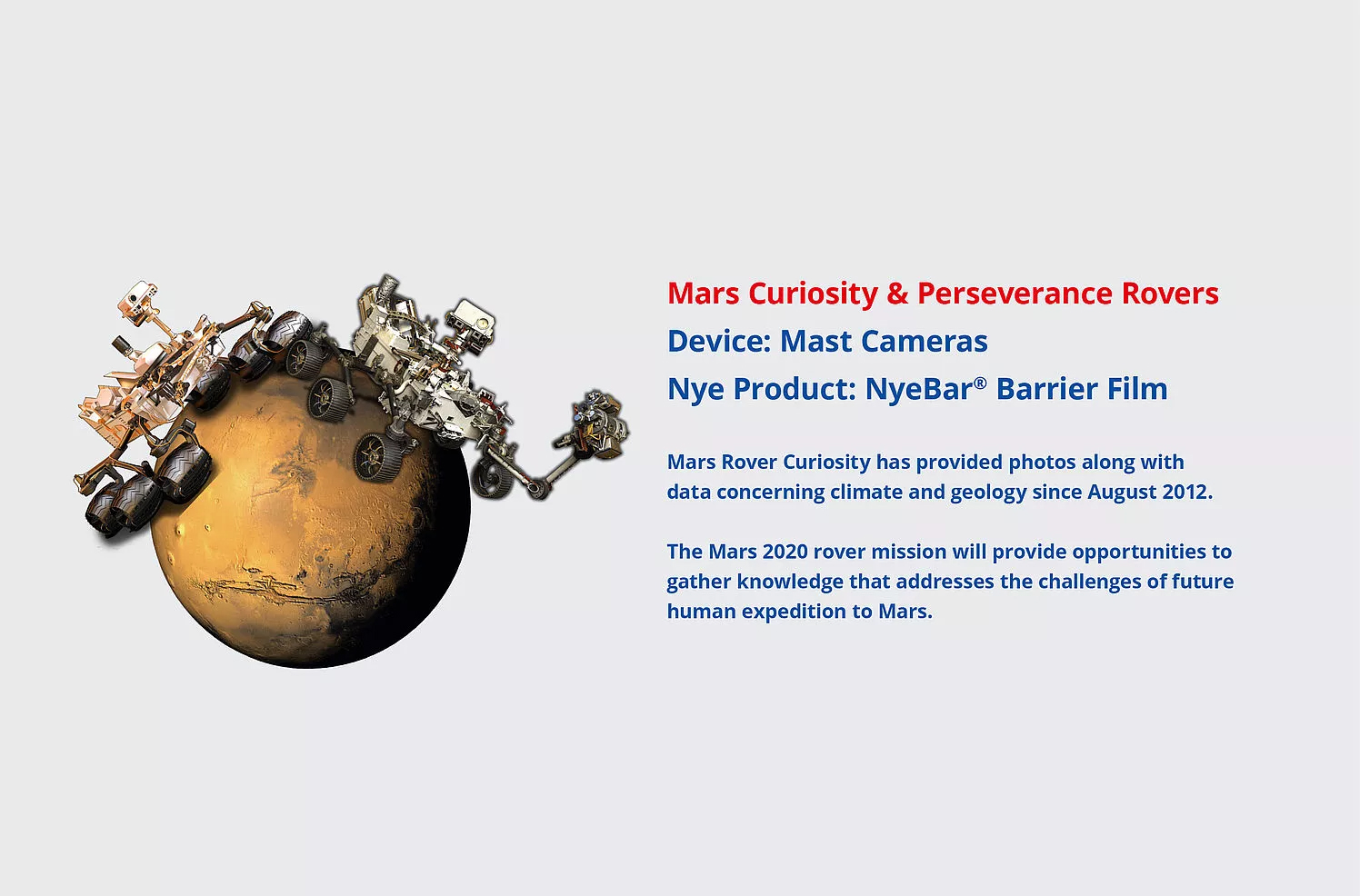
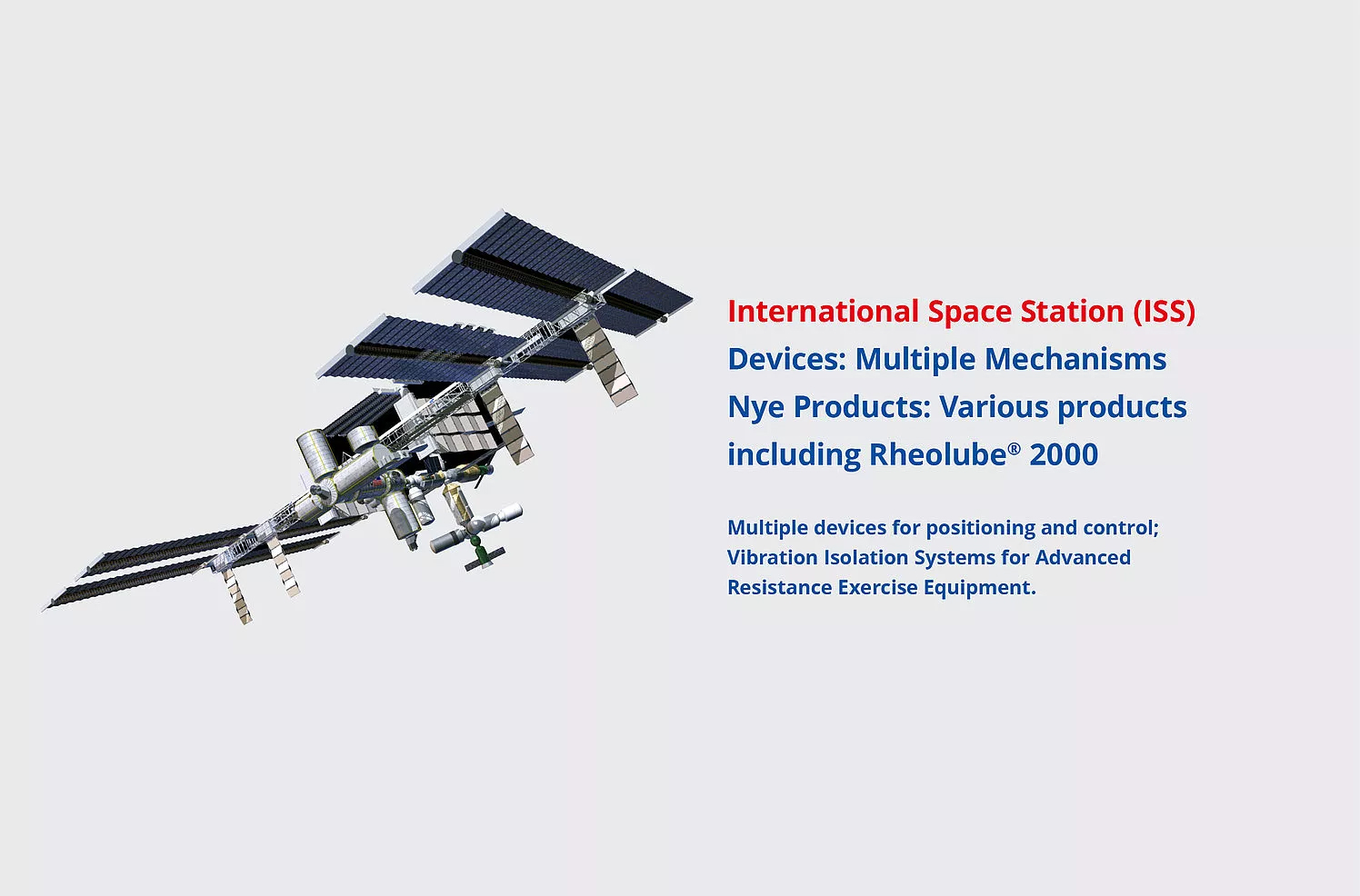
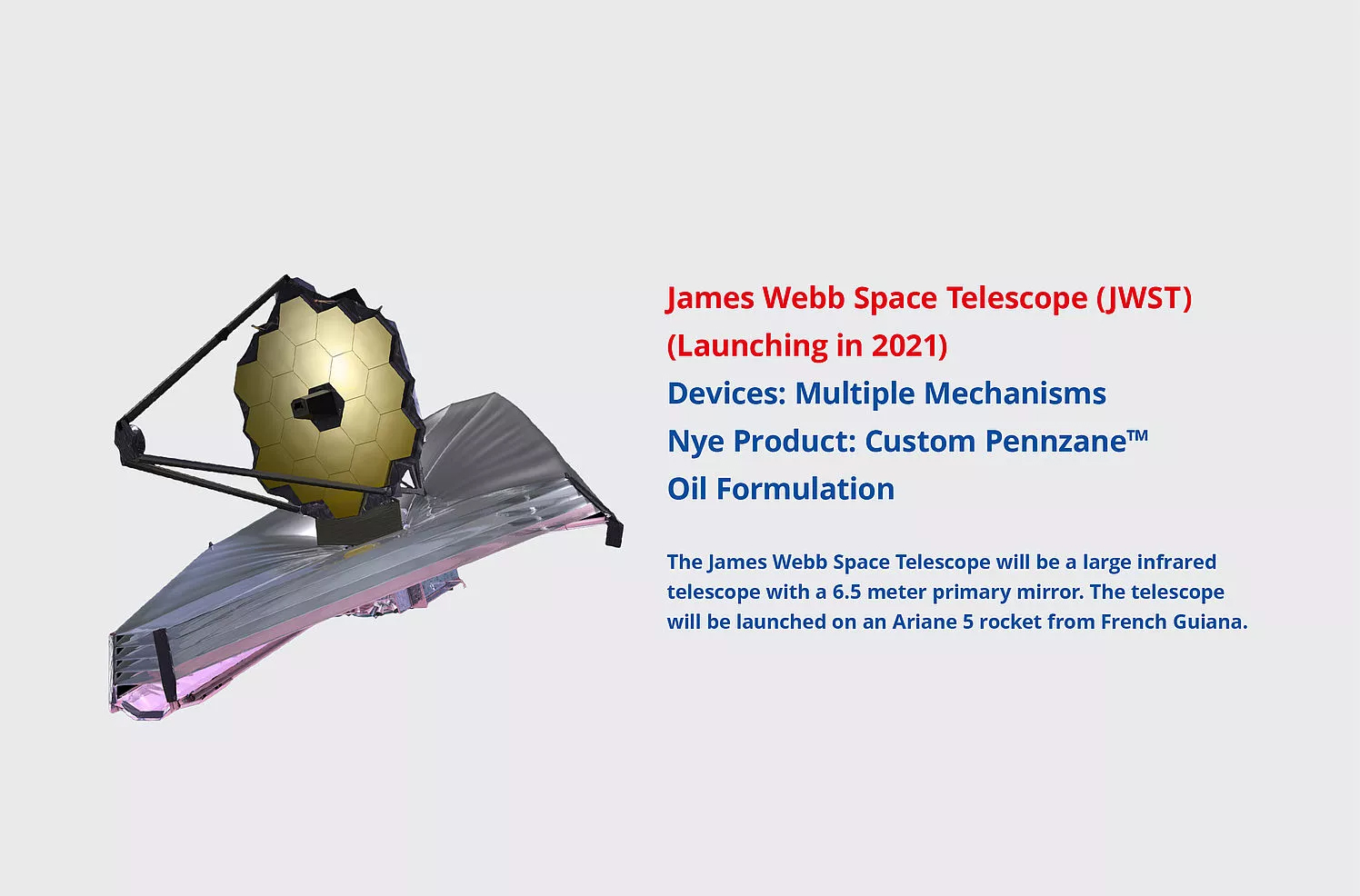
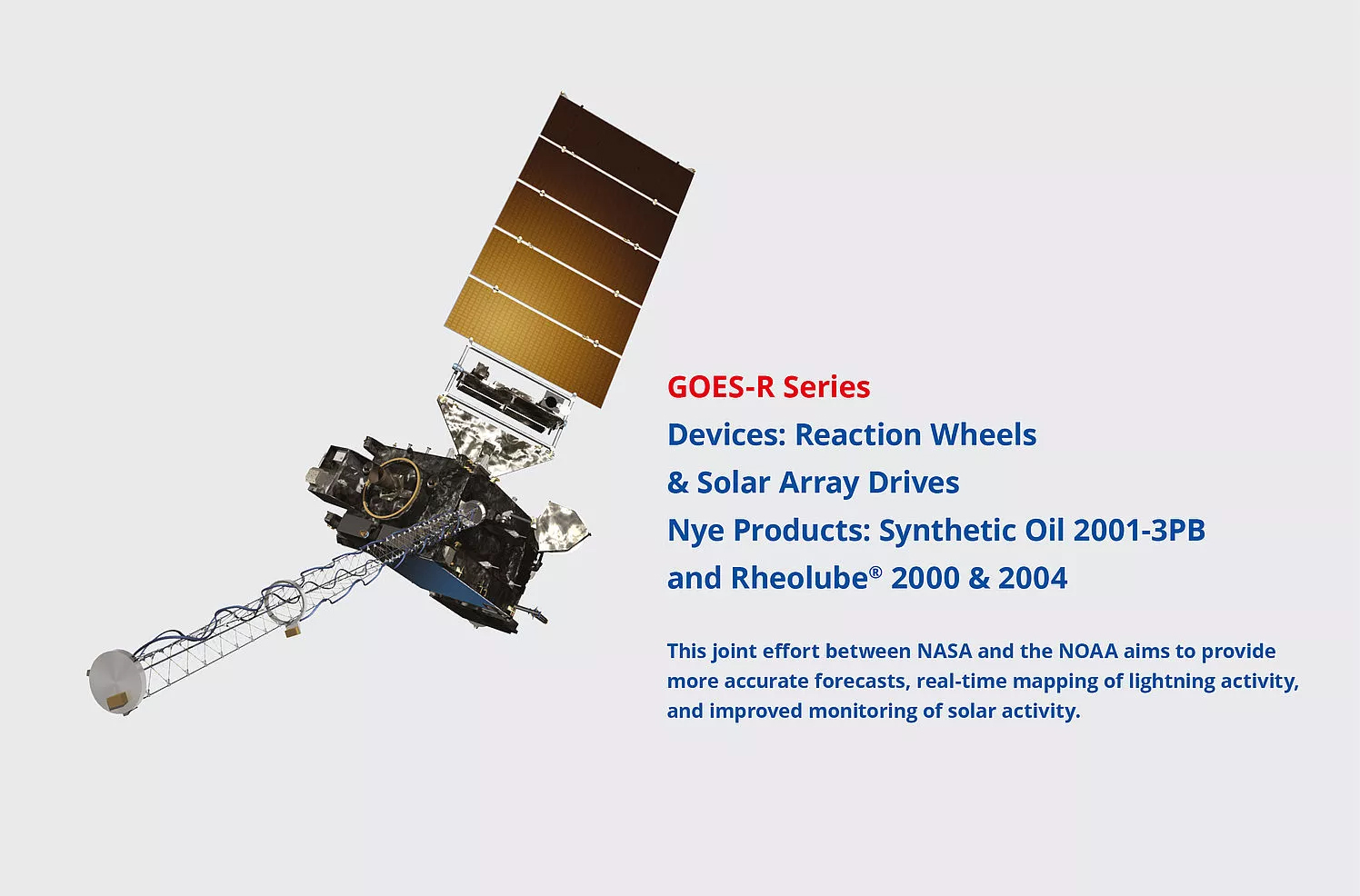
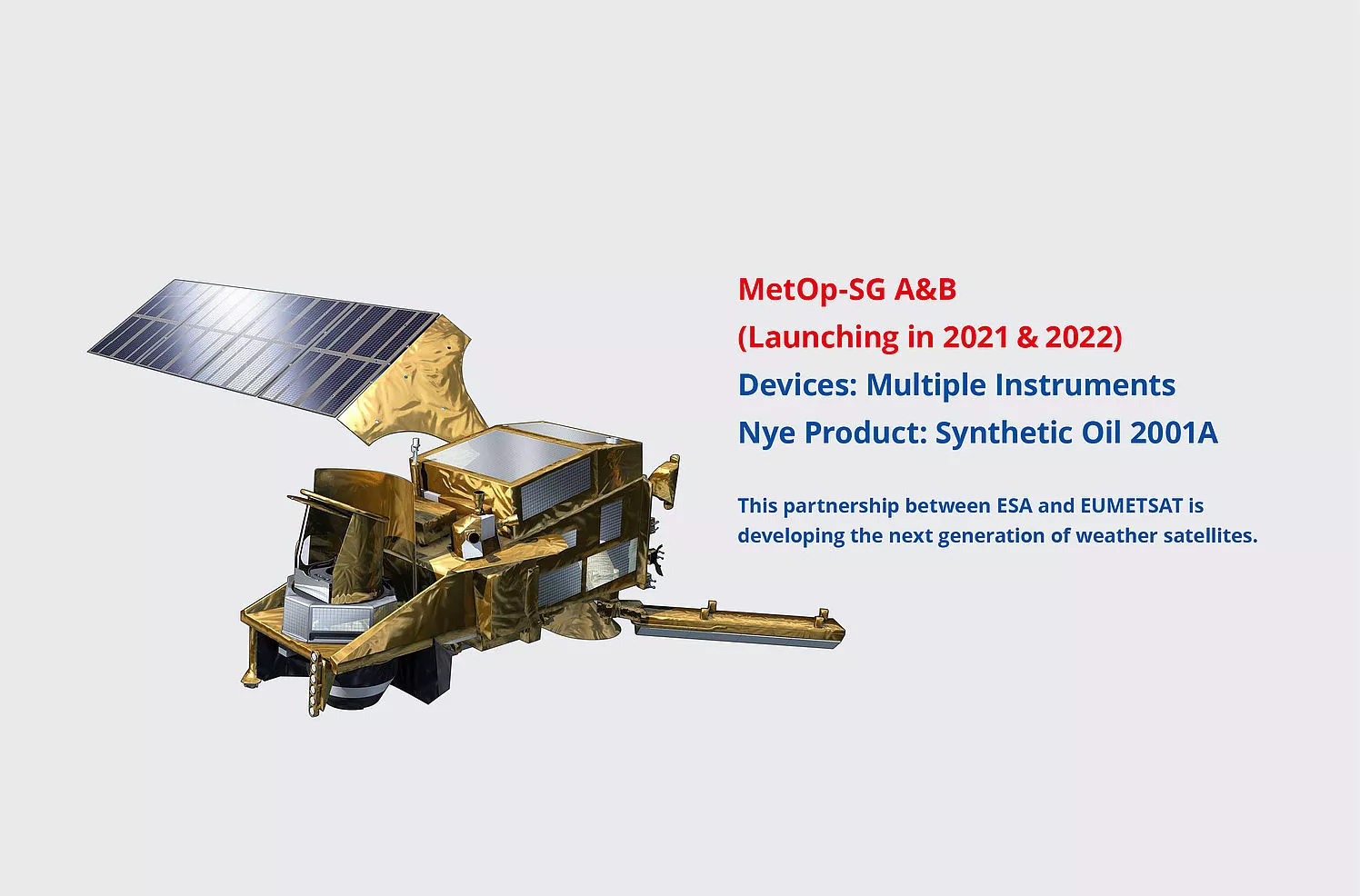
PRODUCT APPLICATIONS
Nye Lubricants has formulated high-quality, synthetic greases and oils for leaders in the space industry for more than 65 years. Today, we continue to work with design engineers in the private, government, and military sectors to formulate new specialty lubricants that will take off with next-generation spacecraft. Launch vehicles, rovers, satellite constellations, and a host of applications involved in human travel and space exploration are just a few of the applications that require lubricants that can withstand the demanding operating conditions of space.
The durability and reliability of all space mechanisms, including lubrication, is critical to ensure the success of long-range missions. These missions will include exposure to ultra-high vacuum, radiation and temperature extremes, making higher performance and extended life lubricants a requirement for applications like gyroscopes, optics, reaction wheels, solar array drives, and more. In addition to extending component life lubricants can also increase load carrying ability, control motion, and reduce contamination. Nye’s lubricants are formulated specifically for space components including:
- Bearings
- Gears,
- Ball & Lead Screws
- Electrical Interconnects
WHAT TO CONSIDER WHEN SELECTING A SPACE LUBRICANT
Lubricants for space mechanisms must be able to withstand extreme temperatures with minimal changes in viscosity. Nye’s PFPE lubricants can withstand temperatures from –90 °C to +250 °C while Nye’s multiply-alkylated cyclopentane (MAC) lubricants have an operating range of -50 °C to 125 °C. If a space application requires the low outgassing and excellent wear performance of a MAC lubricant and the operating temperature is below -50 °C, engineers may, and do, consider adding a heater to their design that raises the temperature into the operating temperature range of MACs.
Components in space mechanisms are now expected to offer extended reliability. As the ability to service or replace these components is limited or non-existent, lubricants must be able to protect components for the entirety of their intended life. We offer ‘Lube-for-Life’ lubricants, meaning that they have long-life performance to ensure reliability and mission success for the entirety of your mission.
Lubricants with good film strength are recommended for space applications and ensure moving parts are coated to minimize contact and friction. MAC lubricants are known for resisting wear-related break down to protect components under heavy loads.
Outgassing is akin to evaporation; it is the release of smaller fractional molecules from a bulk liquid or solid material. Evaporation losses accelerate when operating in vacuum and compromise a lubricant's integrity over time. Lubricants with lower outgassing have a lower material loss and ensure longer-lasting lubrication.
Outgassed molecules can also condense on surfaces and adversely affect the optical or surface properties of the material onto which it condenses. Optical components including sensors, lenses, and solar cells are an example of applications where outgassing condensation can compromise mission performance. Lubricant outgassing is measured in total mass loss (TML) and collected volatile condensable materials (CVCM) per ASTM E595. Nye’s lubricants are tested to this standard and fall well below the acceptable outgassing limits determined by the space industry.
Nye space oils and greases are formulated using two different base oils: Perfluoropolyethers (PFPE) and multiply-alkylated cyclopentane (MAC), each offering specific benefits.
Nye Lubricants holds the exclusive distribution rights to Pennzane™ multiply-alkylated cyclopentane (MAC) fluids. Unlike other lubricants on the market, Pennzane lubricants are the only greases and oils that offer the unique combination of extreme wear protection, low outgassing, and additive compatibility for optimal performance in space applications. If your application requires low outgassing and an extremely wide operating temperature range but does not require the extreme wear performance or specialized additives of a MAC lubricant, a Perfluoropolyether (PFPE) from our NyeTorr® or NyeClean® product line is recommended.
Nye has developed PFPE lubricants using the most advanced technology available, like NyeTorr® 6350EL, which offers significantly improved load-carrying ability and much longer operating life versus heritage PFPE technology.
TML = Total Mass Loss
CVCM = Collected Volatile Condensable Materials
TML = Total Mass Loss
CVCM = Collected Volatile Condensable Materials
SATELLITES
Lubricants play a key role in preventing friction and wear of satellite components such as reaction wheels, scan mirror assemblies, camera optics, and other components that require angular or precision contact bearings. Nye has been working with leaders in the space industry for over 65 years and launched our lubricants for the first time in a satellite 27 years ago.
Our aerospace lubricants are designed for components that require low outgassing, low particle generation and extreme temperature performance. These lubricants are also what we like to call ‘Lube for Life’ meaning that they have long-life performance to ensure reliability and mission success for the entirety of both long and short-term missions.
SATELLITE SYSTEMS & LUBRICANTS
This system is responsible for positioning the solar panels in order to harvest sun light that can be turned into energy. MAC lubricants fortified with both antioxidants and anti-wear additives will help ensure long life of components.
Harmonic Gear Drive - Rheolube® 2004 & Synthetic Oil 2001-3PB
Slip Ring in Power Transfer Assemblies - Rheolube® 2001
This system moves in a horizontal motion to scan targeted areas for imaging. Lubricating the bearings within the assembly will reduce vibration, and allow the system to move in a quick, smooth motion.
Bearings - Synthetic Oil 2001-3PBNP
By providing attitude control, reaction wheels are the control gyros for satellites. A medium viscosity MAC grease will operate through high-torque adjustments and can withstand extreme temperatures.
Barrier Film - NyeBar® Type-P
Bearings - Rheolube® 2000
This instrument supports and spins the satellite throughout the mission. The bearings within the assembly are in constant rotation and require a MAC grease fortified for friction reduction.
Angular Contact Bearings - Rheolube® 2000 & Synthetic Oil 2001
Lubricants for Satellite Systems
TML = Total Mass Loss
CVCM = Collected Volatile Condensable Materials
IN-VACUUM & CLEANROOM
NyeTorr®, NyeClean® and NyeVac® are chemically stable, non-toxic, low-vapor-pressure, synthetic lubricants designed for cleanroom and in-vacuum applications such as those found in the semiconductor and aerospace industries. These lubricants typically contain a PTFE thickener and a cyclopentane (MAC) or perfluoropolyether (PFPE) base oil which are well suited for wide temperature applications where exposure to harsh chemicals may be a concern.
These lubricants improve the performance of bearings, linear guides, ball and lead screws, and seals by:
- Protecting against friction & wear
- Preventing corrosion
- Extending component life
- Ensuring component reliability
- Preventing contamination
- Controlling precision motion
PFPE vs MAC LUBRICANTS
The NyeClean® product line consists of PFPE chemistries while the NyeTorr® product line consists of both PFPE and MAC chemistries. Both PFPE and MAC lubricants are recommended for vacuum environments because of their low vapor pressures and low outgassing properties. PFPE lubricants offer better high temperature performance (up to 250 °C) when compared to MAC lubricants (up to 150 °C). Additionally, PFPE lubricants offer inherent chemical inertness, which translates to unsurpassed resistance to oxidation and hydrolytic degradation, and provides excellent elastomer compatibility. Due to their unique base oil chemistry and additive packages, MAC lubricants provide superior wear protection and bearing life performance. Most MAC and PFPE products are ultrafiltered. NyeTorr® and NyeClean products comply with PFOA regulations.
NyeTorr® lubricants are recommended for applications operating under high vacuum and high temperature where contamination is a concern. NyeTorr® base oils are processed to offer the lowest outgassing of any lubricant from Nye. To ensure low particle and low outgassing qualities, each lot is ultrafiltered and tested per ASTM E595 to ensure the products meet vacuum stability requirements.
PFPE LUBRICANTS
MAC LUBRICANTS
NyeClean® lubricants are recommended for cleanroom or low vacuum applications such as those found in back-end semiconductor manufacturing. These lubricants offer good outgassing performance, although higher than what is found in NyeTorr® products, and excellent particle generation properties.
NyeVac® oils are recommended for bearings and other components found in vacuum and turbomolecular pumps. These ester-based oils offer good high temperature and wear performance.
METAL CUTTING & FABRICATION
FUCHS retains a diverse portfolio of high-performance metal cutting coolants to support aerospace grade material fabrication in the manufacture of spacecraft, satellite, and componentry.
CLICK HERE TO LEARN MORE
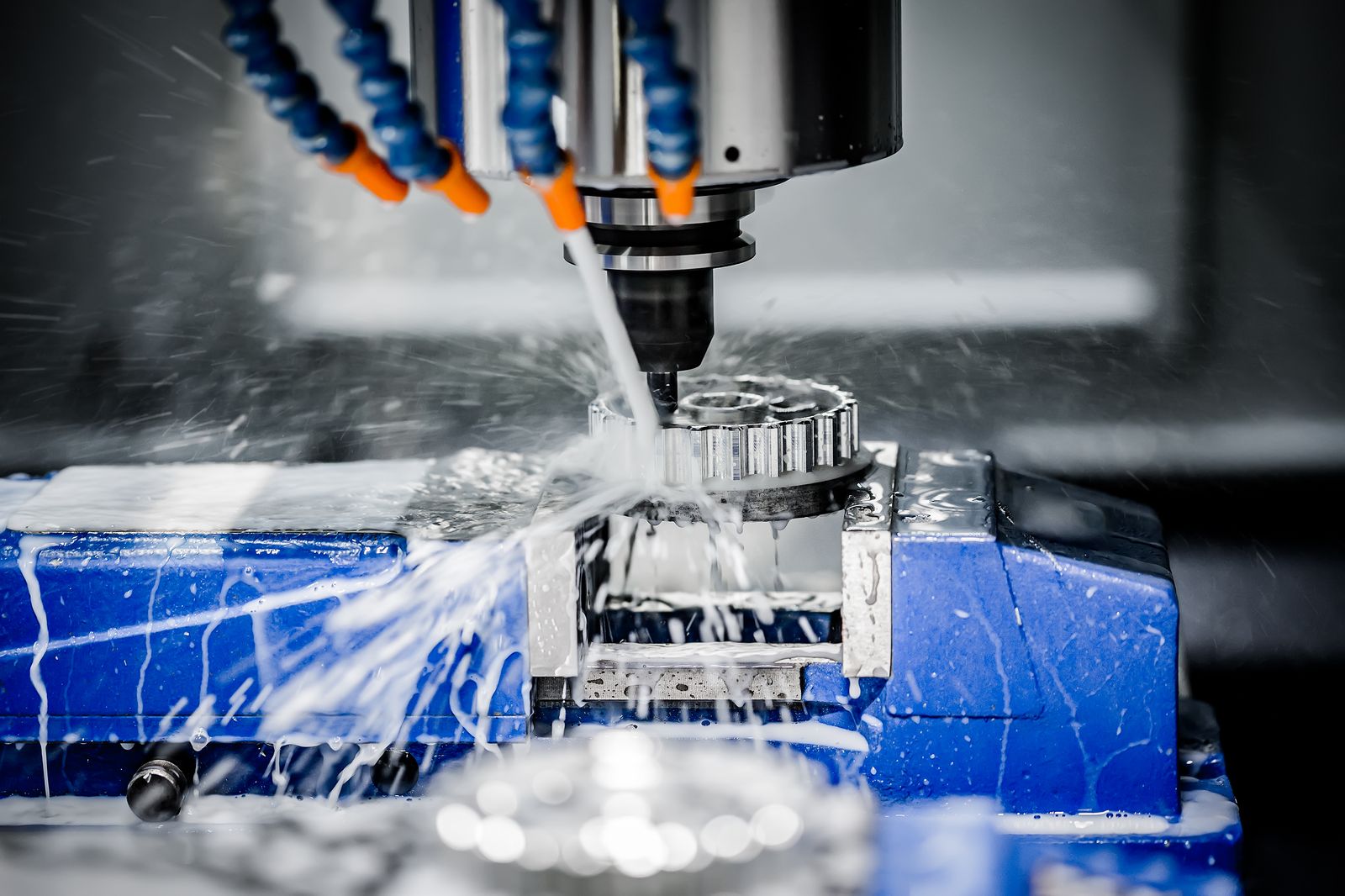
ELECTRICAL CONNECTOR
FUCHS Lubricants has a complete line of dielectric greases designed specifically to address application requirements for contact protection, insertion force, sealing, temperature limits and material compatibility.
